We caught up with the brilliant and insightful Elizabeth Gahan a few weeks ago and have shared our conversation below.
Hi Elizabeth, thanks for joining us today. Learning the craft is often a unique journey from every creative – we’d love to hear about your journey and if knowing what you know now, you would have done anything differently to speed up the learning process.
I’ve been interested in making art my entire life. But, it was in college when I began to broaden my understanding of art through classes in art history and theory. I was hooked; to experience art not only as creative production, but also as a way of seeing and investigating the world. The transition to finding my own aesthetic and voice as an artist, to develop the ideas and themes that would give meaning and motivation to my work was challenging. At first, it turned my world upside down and even brought me to tears. Being an “artist” was already a part of my identity, but I questioned the merit of my work. I realized it would take a lot more to sustain a meaningful art practice. At that time, of course I wanted to sell my artwork, but I was far from thinking about building a business as part of being a professional artist. That wasn’t part of the conversation at my University. It almost felt taboo. I wish I’d understood sooner that talking about art as a business does not diminish the authenticity or value of the practice.
Once the insecurity subsided, it was a wonderful time of curiosity and research during which I found contemporary artists whose work inspired me and I was exposed to a variety of approaches to art. I earned a fine art degree, and paired it with a degree in Global Studies that still informs my art practice to this day. I then worked at a non-profit gallery for a year before going to Graduate School to earn an MFA.
I’ve been asked if an MFA is a worthwhile investment. I think it’s different for everyone. There are other ways to get experience, but for me it was an extremely beneficial time to develop my aesthetic and understand my art. Developing the skills to talk and write about your art is so important. I continued to pursue a multidisciplinary approach, taking coursework in exhibition design and cultural studies, and the Fine Art program emphasized studio work and critiques. I began to build relationships with other artists and visit galleries.
“Networking” always seemed like a daunting and hollow endeavor, but what I discovered is that making genuine connections and finding a dialogue within the creative community is invaluable. The support, collaboration, conversation from other artists is what gives me enthusiasm and energy to keep at it. It took time to arrive at this realization and I wish I had this frame of mind sooner. Throughout my career, I’ve learned many variations of this lesson again and again —engagement is such an important part in sustaining an art practice.
After leaving school it became even harder to connect and to navigate the art world, to find points of entry and define your own path. There is no road map to making it work. In my experience, participating, reaching out to other artists, exploring, collaborating and continuing to learn is what grows an art career. One of my mentors from school told me, “There isn’t just one way to be a successful artist.” I didn’t see the full meaning of this right away. Now, I think she meant not only that I should follow my own path to become a professional artist (at that time I’d decided to leave LA and move to Seattle), but to also define success in my own terms. Maybe that seems obvious, but when the art world starts feeling like an impenetrable wall, her words always come to mind. For the first time I began to think about developing my art practice in terms of building a successful business.
When I started my art business full time, it was scary. I thought, “I’ll do this full time for as long as I can make it work and if the bottom drops out, I will do something else.” But with each project another opportunity emerged and after years of feeling like any minute this adventure would be over, I started to trust that I could make it work. In those early days, I said yes to every opportunity and many of them are the building blocks on which I stand on now. However, some were not in the best interest of the artist. It can be hard to tell in the moment, but I think that artists have to first value their contributions and then expect to be compensated and valued for their participation. Through trial and error, I’ve learned to have higher expectations, negotiate for what is needed, and most importantly, ask for help, ask questions, and be willing to admit when something is not a good fit.
In 2013, I sublet a studio at Equinox Studios in Georgetown as a space to fabricate a large public art project. I found an amazing community and have never left. I have no doubt that working alongside other creatives and being part of this generous, unique and inspiring community is a significant reason why I’ve found longevity in my artistic practice. Even during times when I’m so busy and it seems like all I can do is lock myself away in my studio, I still know I am surrounded by people, who like me, are actively choosing a creative profession despite the numerous challenges. It is no secret that it is hard to make a living as an artist. You know that going into the profession. But it’s not just a lack of opportunity or funding that is a challenge, it is that the value of an artist does not fit easily into our established economic systems. The currency of creatives is authenticity, integrity, uniqueness, quality over efficiency, and not fitting the mold. We are often inaccurately grouped with other professions. When we do our taxes we’re lumped in with manufacturers, when we register our public art projects to the State, there is no category for Artists; we are deemed general contractors. There are fees and permits required that have nothing to do with the actual work we are doing. Finally, artists are often asked to volunteer their ideas and skills as if they are superfluous rather than essential to our economy.
Our culture relies so heavily on monetary gain as a metric for success, but as an artist, some of the most successful art projects I’ve ever done were not profitable. The value resides in the experimentation and innovation of the work, the impact of the artwork to engage viewers and generate conversations, the feat of pursuing something I dreamed up and succeeded in making.
What motivates me as an artist, and the moments when I feel a sense of accomplishment, are often not reflected in the earned income. In a society that places so much value on profit as an indicator of success, it can feel like a rejection of the type of intrinsic value an artist brings to the table. I’d love to see this dynamic change within our culture, but until then an artist’s job is as much about inventing a culture of creative values as it is about creative production. An artist has to rely on their own definition of success and choose to live by that every day or risk giving up.
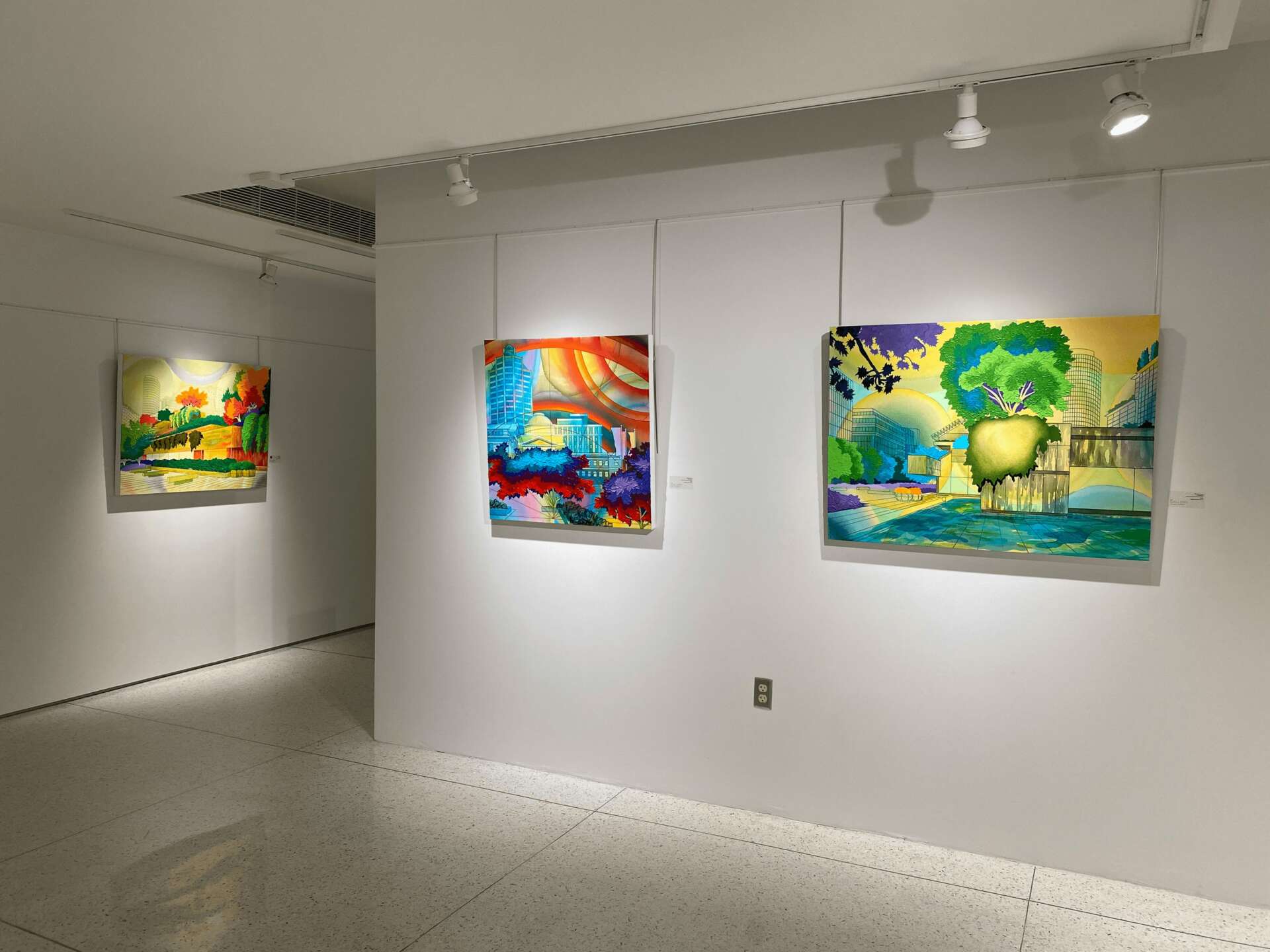
As always, we appreciate you sharing your insights and we’ve got a few more questions for you, but before we get to all of that can you take a minute to introduce yourself and give our readers some of your back background and context?
I make art in a variety of ways including fine art painting, public art murals, temporary installation art, and permanent sculptures & installation. My artwork explores relationships between natural and built environments, public space and personal experience, local and global connections. I aim to create beauty with meaningful content.
I also offer Public Art Consulting services.
I have degrees in Fine Art and Global Studies. The Global Studies program at UC Santa Barbara is widely recognized as one of the nation’s first interdisciplinary majors in international studies to focus on globalization. Global Studies is dedicated to understanding globalization as a multidimensional, multi-level and historical process studying the social, cultural, political, environmental, and economic consequences of global flows, institutions, and processes. This education deeply shaped my world view and set in motion the content of my art practice to this day. I also have an MFA from Claremont Graduate University in Los Angeles where I focused on painting, art theory and curatorial studies. I then pursued an artist residency in installation art at the Banff Centre in Canada before moving to Seattle in 2008. I continue to develop a studio painting and public art practice from my studio at Equinox.
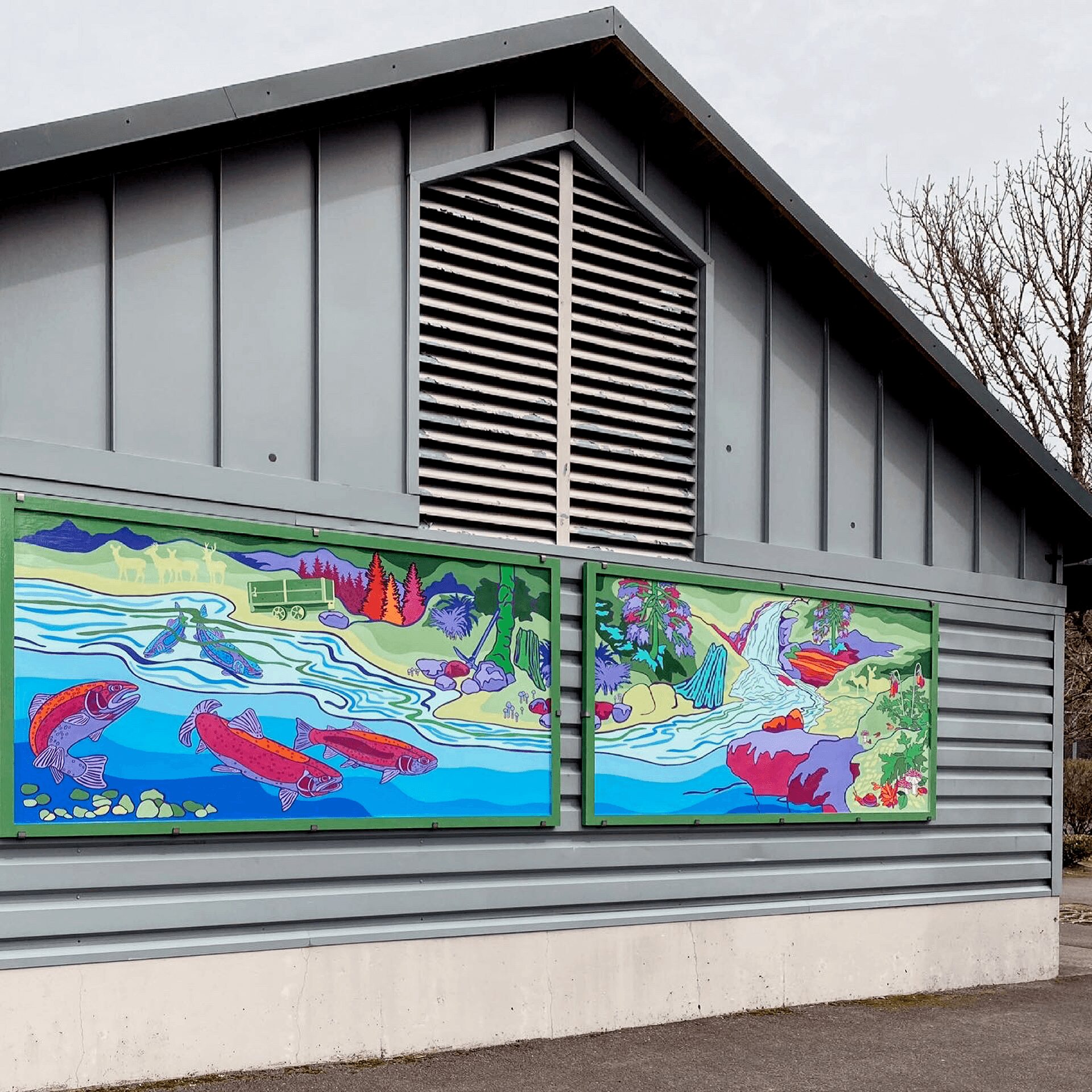
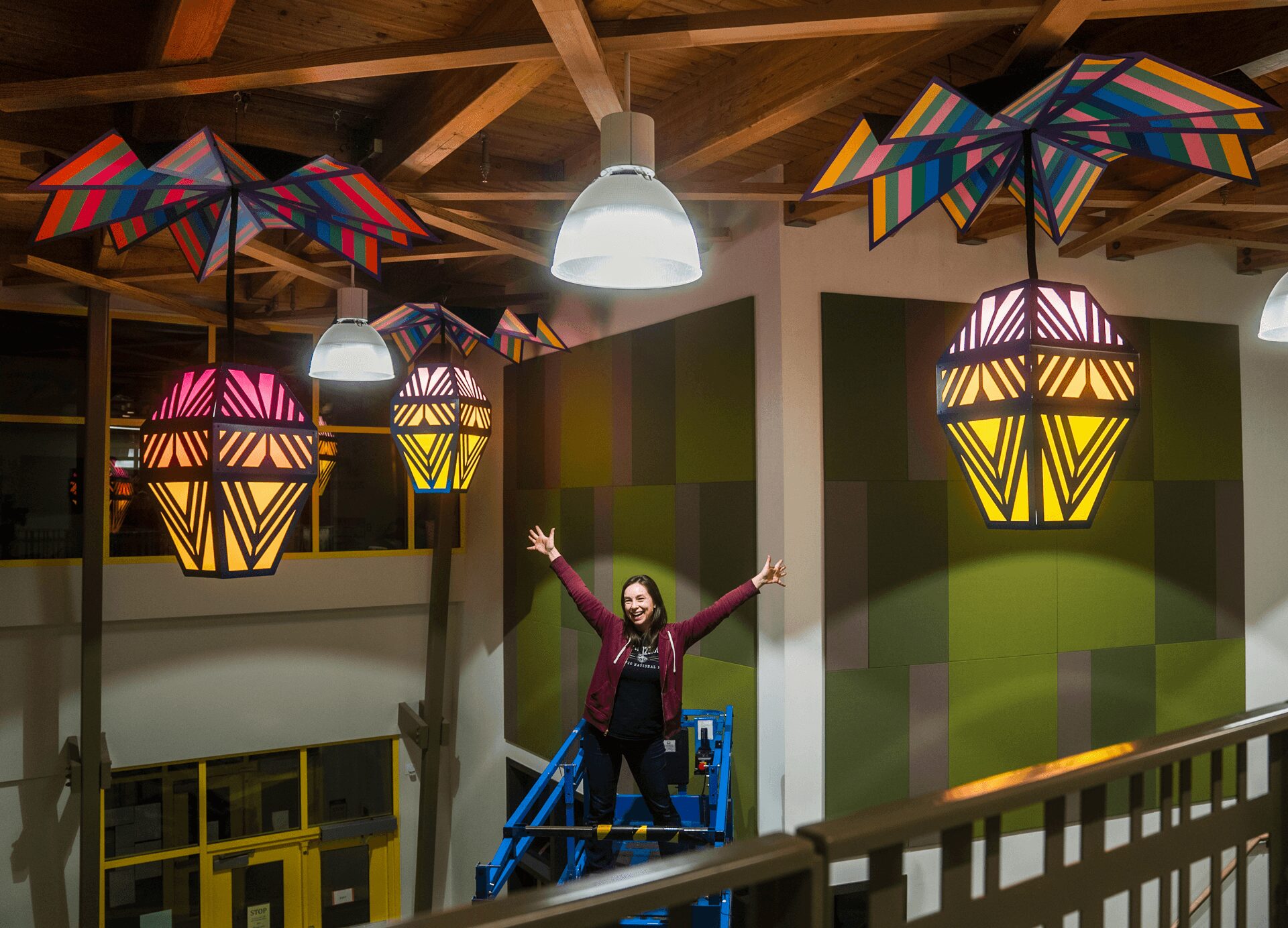
Any resources you can share with us that might be helpful to other creatives?
I wish I’d done more artists residencies early on when I had more flexibility to travel. I thought I couldn’t afford it, but there are many residency opportunities and some even pay artists.
There are list serves where you can find opportunities and grants for artists. Locally, the City of Seattle Office of Arts, 4Culture and Artist Trust have lists online. CaFÉ, (or Call For Entry) is a list serve and application platform. There are so many more. I should have asked every artist I met, how they find art opportunities and kept that information organized to better track and share information. I only apply to free applications on principle. The cost of a program, event or show should not be passed on to the artists through application fees, this is a mistreatment of artists. It also indicates to me that the organization might have other problematic practices and I would rather focus my efforts elsewhere.
It is worth working with an accountant and it doesn’t have to be expensive.
If you have to sign a contract, always consult an attorney. I think artists are deterred by the cost, but it is so important to protect yourself and be sure you understand your commitments. Locally, Lawyers for the Arts will offer free consultations to artists.
All your past projects/experiences are valuable resources. Keep digital records of all your projects – design development, budget breakdowns, applications, artist statements, contacts from the project, fabricators, manufacturer, get process photo/video documentation, always invest in high quality photos of the finished artwork and keep all of this well organized as you go. You never know what might be helpful in future projects, proposals or grant writing. The key is organizing your all your projects using a planned system of labeling folders and documents so that you can track things down later. It sounds dry, but it will save time and headache down the road.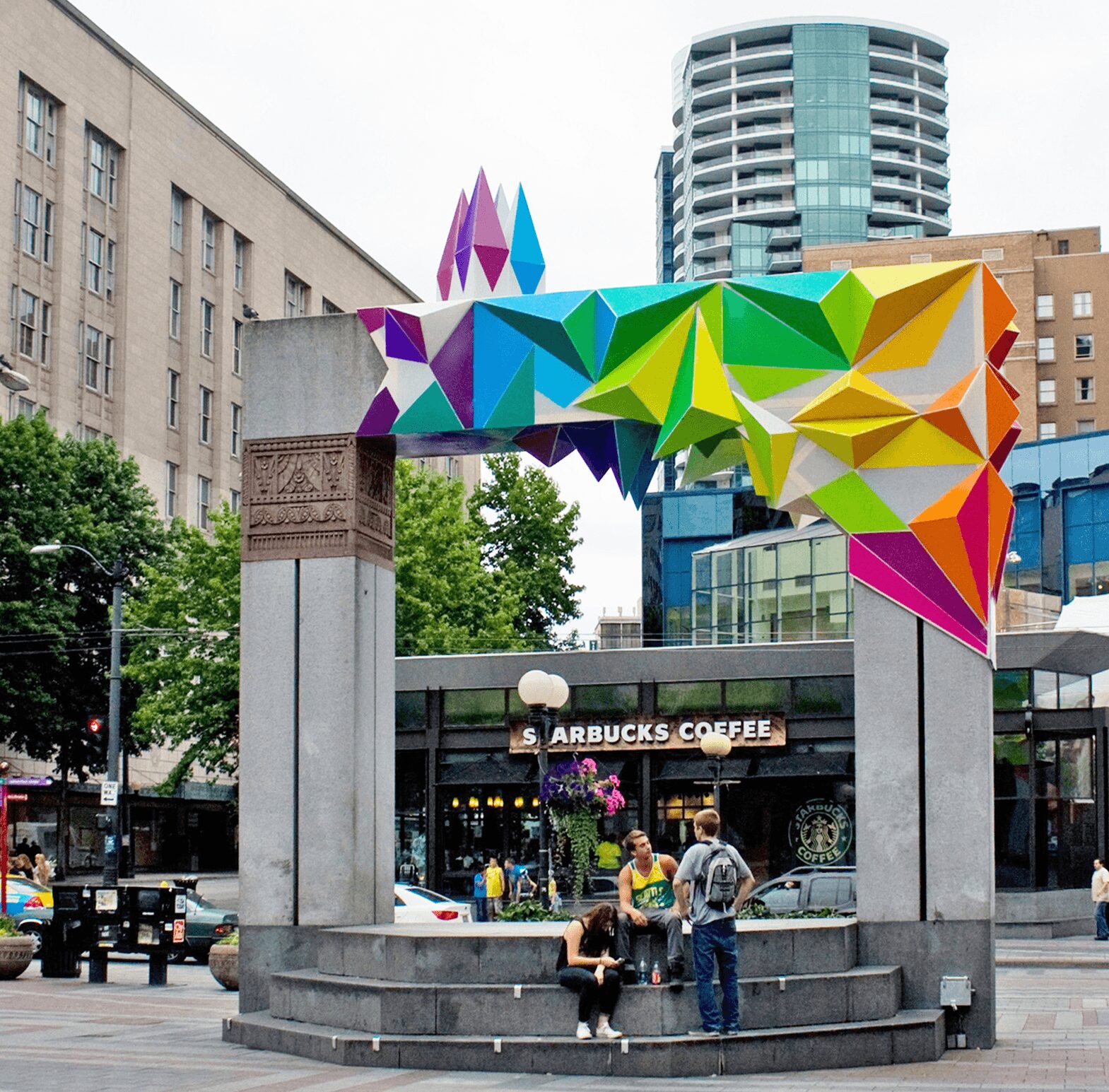

For you, what’s the most rewarding aspect of being a creative?
Art is not only my profession, it’s my interest as well. When I travel, I look for interactive art installations, events, murals, made by hand shops, galleries and museums. I include my family and friends. It’s a strategy for exploring the world that leads to unexpected experiences. It is a wonderful way to see new places and communities, and it’s fun.
Bing and artist puts me in the path of meeting other creatives that amaze me.
Essentially being an Artist is about approaching life with curiosity and exploration often resulting in wonderful life experiences. The lifestyle of an artist or creative is renewing, getting to see and experience the best part of what people can do. It gives me hope.
Contact Info:
- Website: https://www.elizabethgahan.com/
- Instagram: @elizabeth_gahan_art
- Facebook: https://www.facebook.com/ErgArtStudio
- Linkedin: https://www.linkedin.com/in/elizabeth-gahan-4b523520/
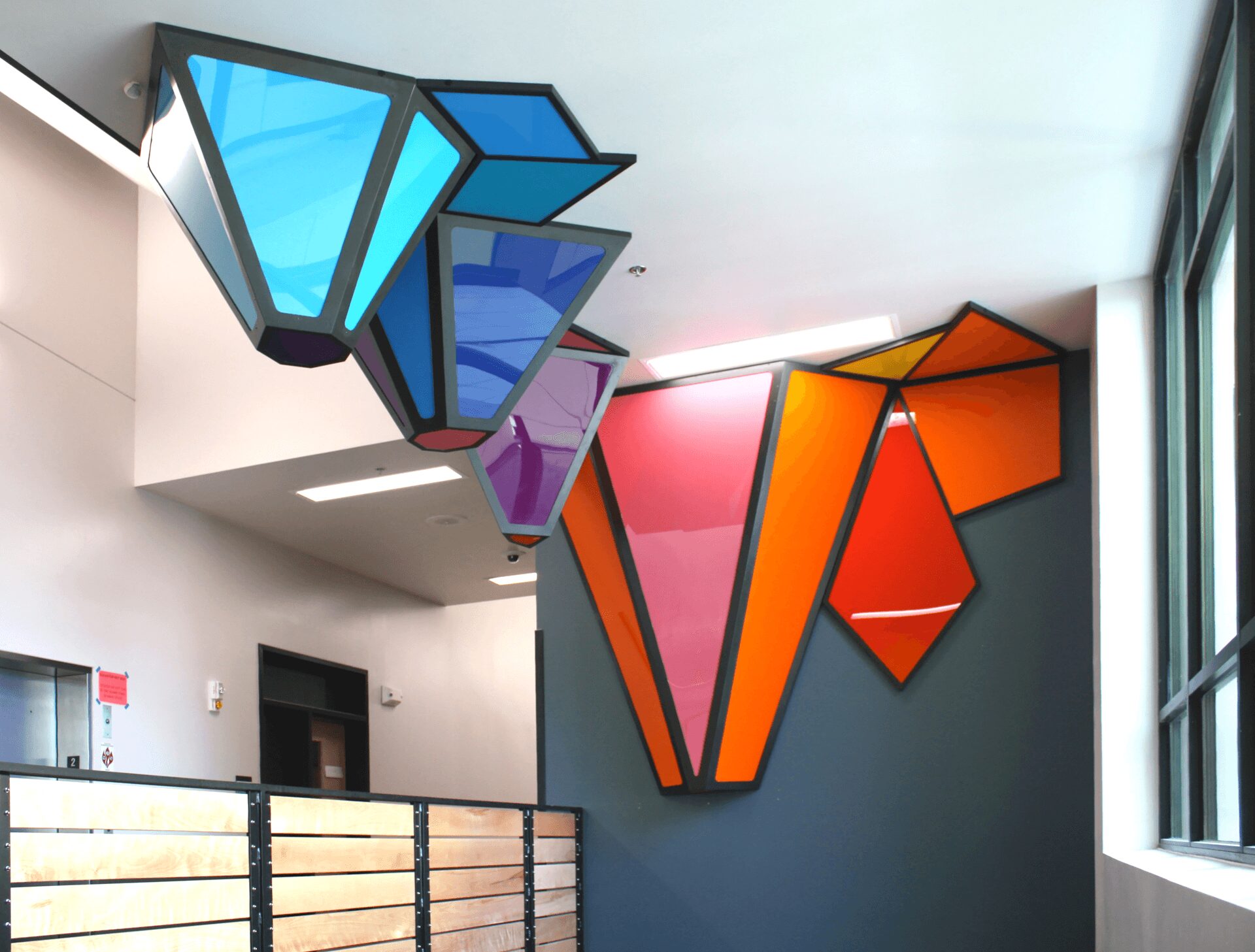

Image Credits
“01_Gahan_permanent_Canopy_with artist at install” photo credit: Shane Bang
All other photos by artist: Elizabeth Gahan


